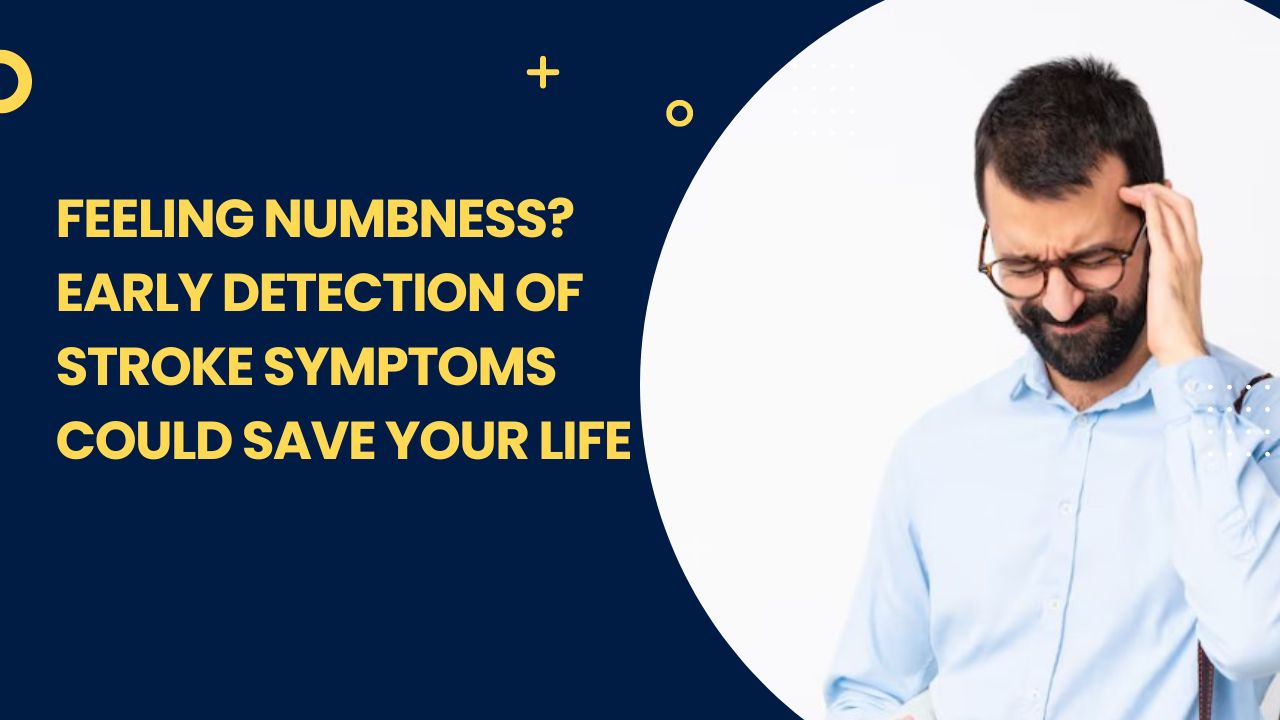Feeling Numbness? Early Detection of Stroke Symptoms Could Save Your Life
Feeling Numbness? Early Detection of Stroke Symptoms Could Save Your Life
In today’s fast-paced world, health often takes a back seat until a significant issue arises. One such critical health concern that requires immediate attention is stroke. Often misinterpreted as a mere consequence of stress or fatigue, numbness can be an early indicator of a stroke. Recognizing this symptom and understanding its implications can be life-saving. Choose the Neurologist Hospital In Coimbatore importance of early detection of stroke symptoms, particularly numbness, and how it can significantly impact outcomes.
Understanding Stroke: A Brief Overview
A stroke occurs when the blood supply to a part of the brain is interrupted or reduced, depriving brain tissue of oxygen and nutrients. Within minutes, brain cells begin to die. There are two primary types of strokes: ischemic stroke, caused by a blockage in an artery, and hemorrhagic stroke, caused by a ruptured blood vessel. Both types can lead to severe brain damage and, if not treated promptly, can be fatal.
The Role of Numbness in Stroke Detection
Numbness, particularly on one side of the body, is a common symptom of a stroke. This sudden loss of sensation can affect the face, arm, or leg and is often accompanied by other symptoms such as confusion, trouble speaking, and difficulty walking. However, numbness alone can be a subtle yet telling sign of an impending stroke, making it crucial to recognize and act upon it swiftly.
Why Early Detection Matters
Time is of the essence when it comes to treating a stroke. The faster a stroke is diagnosed and treated, the better the chances of minimizing brain damage and improving recovery outcomes. According to the American Stroke Association, immediate treatment can significantly reduce the risk of long-term disability and increase the likelihood of a full recovery. Therefore, understanding and identifying early symptoms like numbness can make a life-saving difference.
Recognizing the Signs: The F.A.S.T. Method
The F.A.S.T. method is a simple yet effective way to remember the signs of a stroke and the actions to take:
-
F – Face Drooping: Ask the person to smile. Does one side of the face droop?
-
A – Arm Weakness: Ask the person to raise both arms. Does one arm drift downward?
-
S – Speech Difficulty: Ask the person to repeat a simple sentence. Are the words slurred or hard to understand?
-
T – Time to Call 911: If any of these signs are present, call emergency services immediately.
The Science Behind Numbness and Stroke
Numbness during a stroke occurs due to the disruption of blood flow to areas of the brain responsible for sensation. This disruption leads to the death of brain cells in those regions, resulting in a loss of sensation in the corresponding parts of the body. The left side of the brain controls the right side of the body and vice versa; hence, a stroke in the left hemisphere can cause numbness on the right side and vice versa.
Risk Factors for Stroke
Several risk factors can increase the likelihood of experiencing a stroke, including:
-
High Blood Pressure: The leading cause of stroke, high blood pressure can damage arteries over time, leading to blockages or ruptures.
-
Diabetes: High blood sugar levels can damage blood vessels and increase the risk of blood clots.
-
Heart Disease: Conditions such as atrial fibrillation can lead to blood clots forming in the heart, which can then travel to the brain.
-
Smoking: Nicotine and carbon monoxide in cigarettes damage the cardiovascular system, increasing stroke risk.
-
High Cholesterol: Excess cholesterol can build up in arteries, forming plaques that can block blood flow to the brain.
Preventative Measures
While some risk factors such as age and family history cannot be controlled, many lifestyle changes can significantly reduce the risk of stroke:
-
Maintain a Healthy Diet: Eating a balanced diet rich in fruits, vegetables, whole grains, and lean proteins can help manage weight, blood pressure, and cholesterol levels.
-
Exercise Regularly: Regular physical activity can help control blood pressure, cholesterol, and blood sugar levels.
-
Quit Smoking: Stopping smoking can improve overall cardiovascular health and reduce stroke risk.
-
Monitor Health Conditions: Regular check-ups and managing conditions like high blood pressure, diabetes, and high cholesterol can prevent strokes.
What to Do If You Experience Numbness
If you or someone you know experiences sudden numbness, particularly on one side of the body, it is vital to seek medical attention immediately. Even if the numbness subsides, it could be a warning sign of a transient ischemic attack (TIA) or mini-stroke, which significantly increases the risk of a full-blown stroke in the near future.
The Role of Medical Intervention
In the event of a stroke, medical intervention can vary depending on the type and severity of the stroke. For ischemic strokes, treatments may include clot-busting drugs or mechanical thrombectomy to remove the blockage. For hemorrhagic strokes, surgical procedures may be necessary to repair the ruptured blood vessel and relieve pressure on the brain. The sooner these treatments are administered, the better the chances of recovery.
Rehabilitation and Recovery
Recovery from a stroke often involves a combination of physical therapy, occupational therapy, and speech therapy to regain lost functions and improve quality of life. The extent of recovery can vary based on the severity of the stroke and the speed of treatment. Early detection and treatment can significantly enhance the effectiveness of rehabilitation efforts.
Conclusion
Numbness is more than just an annoying sensation; it can be a critical warning sign of a stroke. Early detection and prompt medical intervention are paramount to reducing the devastating effects of a stroke. By understanding the importance of recognizing symptoms like numbness and knowing the steps to take when they occur, you can potentially save a life perhaps even your own. Remember, when it comes to stroke, every second counts. Stay informed, stay vigilant, and prioritize your health.



